Croatian Beach vs Pool Dilemma: Arguments For Both Sides Overview
August 11, 2021 - Looking at the broad offer of swimming options on Adriatic, you may find yourself in the middle of a Croatian beach vs pool dilemma. TCN reporter Ivor Kruljac found pros for both sides.
With exciting history, heritage, and interesting experiences to be had, coastal Croatia and the Croatian islands known how to sell what they've got. The clear, refreshing, and clean sea has been the most valuable arsenal in Croatia's tourist offer from the very start.
In that spirit, it may seem unusual to see many hotels with glorious sea views and short walks to beaches that have pools, both indoors and outdoors. Sure, the indoor pools are great if you have the misfortunate of some bad weather when you're dying for a swim, but do outdoor pools really make sense next to the lovely Adriatic?
Well, both sides of this argument have valid points. Here is a shortlist of the cases when one dominates over the other in this epic Croatian beach vs pool debate.

Looking for safe fun? Then the pool wins
With Croats enjoying the reputation of being ready to help and watching over others, and even with some of the beaches having lifeguards, pools are definitely the safer option if swimming isn't your strong side. The majority of pools have a shallow and deeper end, and while the sea can suddenly become deeper than you what you've bargained for, the transition is much easier in the pool.
If you do get cramp or get in some sort of trouble, even if other swimmers don't respond, you can be sure that hotel staff will pull you out just in time. The rules of conduct (which you have to oblige to) ensure your safety and that of the other guests. The limits of a pool can make it easier for you to watch over your kids while they have safe aquatic fun. In addition, sea urchins or painful rocks on which you can hit yourself while entering the Adriatic, as well as small pebbles that can be annoying on the soles of your feet, aren't an issue in a controlled pool environment. 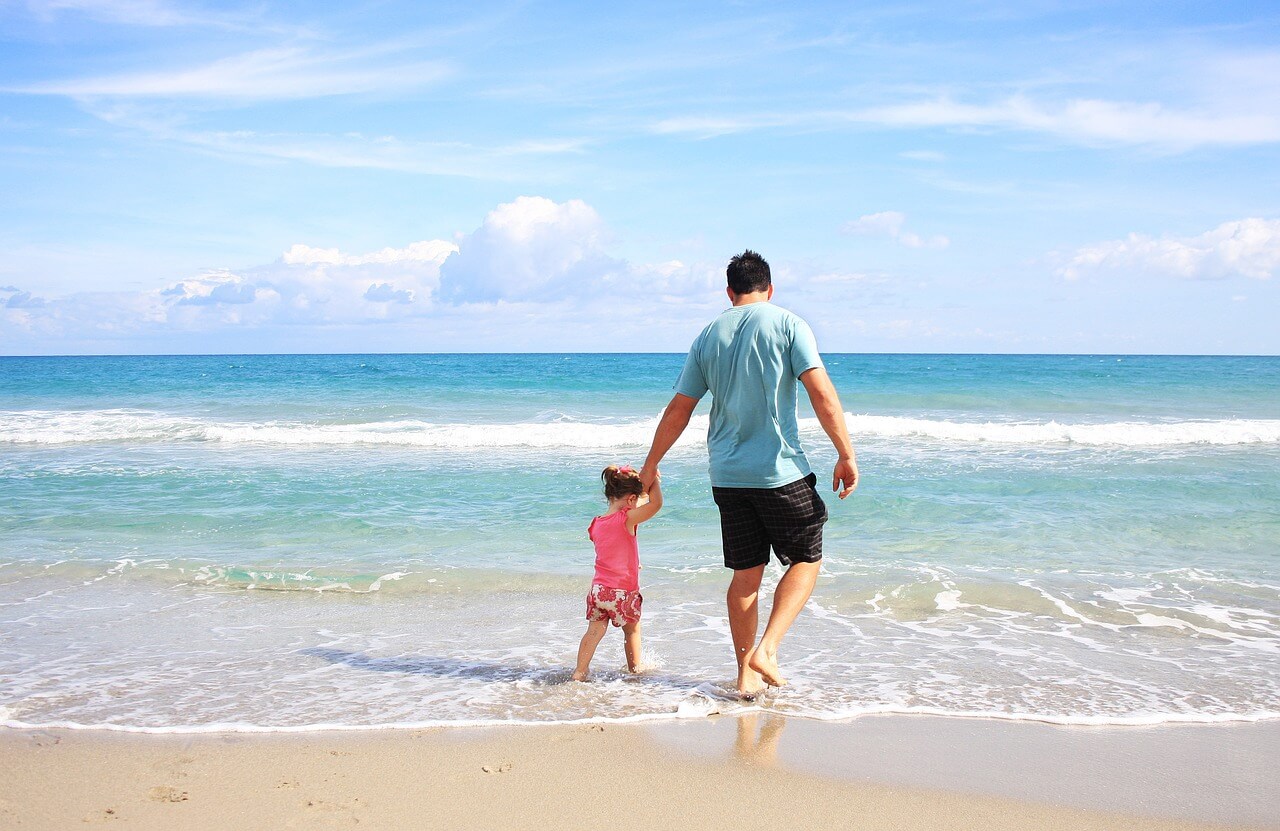
Looking for space? Then a Croatian beach will win
If you feel claustrophobic in the small and typically confined limits of the pool, then a Croatian beach is the best place to go for a longer swim. With experienced swimmers being able to swim from one side of the pool over the other, the sea provides a better challenge in terms of routes and directions you can take. Additionally, pools can be quite crowded, and if you want to take a refreshing dip as some ''zen'' time for yourself, then chilling in the Adriatic can be done at a more considerable distance from others that came to enjoy the day.
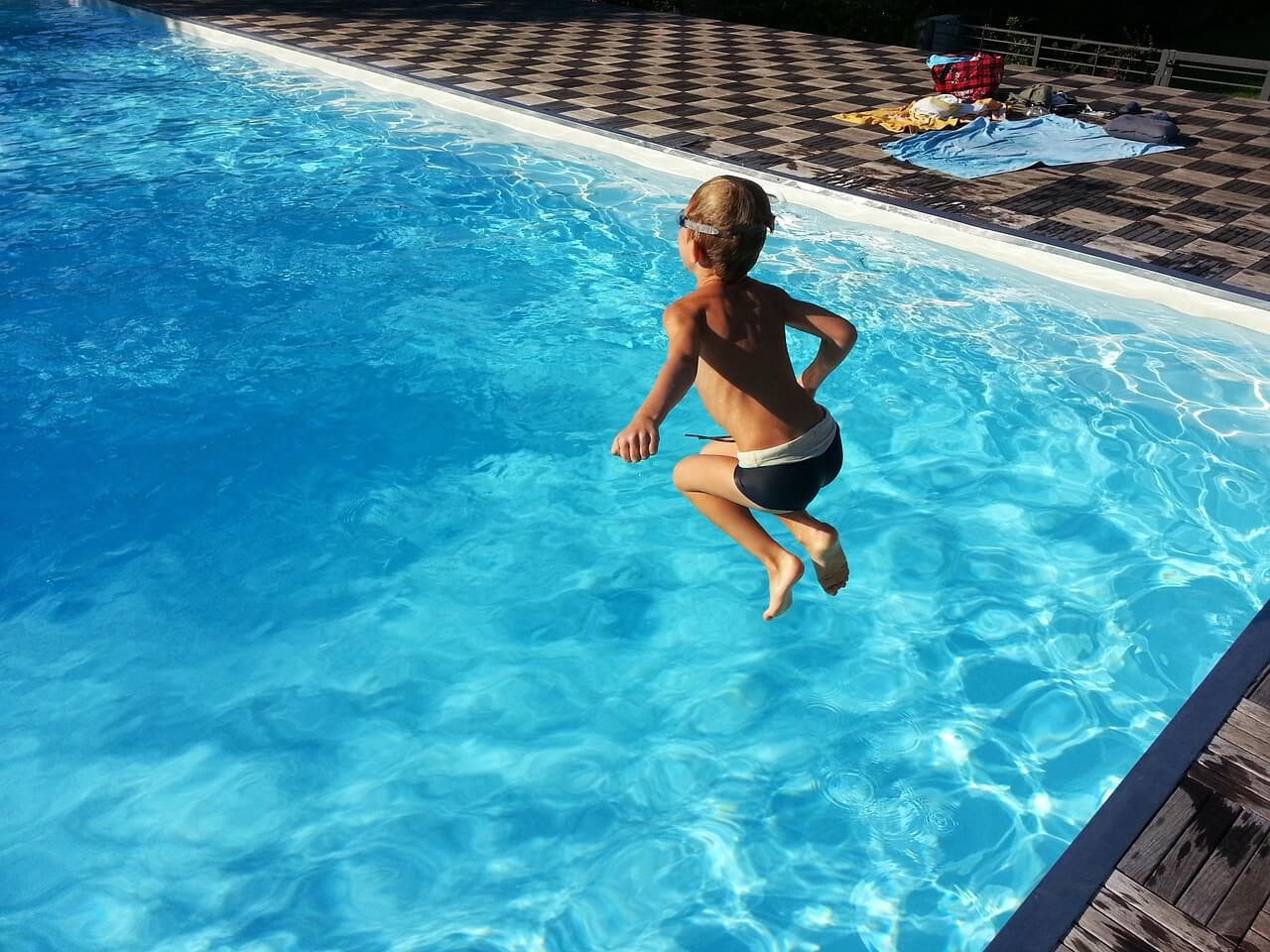
Do you fancy a space reserved just for you? Head to the pool
We all know that moment of frustration when a beach is crowded like hell, and you just can't find a place to leave your towel for the life of you. As pools are limited to the guests of the hotel, you can rest assured that when you arrive poolside, you'll manage to be able to find a place to soak up the sun and get a nice tan after you're done with swimming as the hotel calculates the maximum number of people that they can accommodate at any one time (at least the good hotels do).
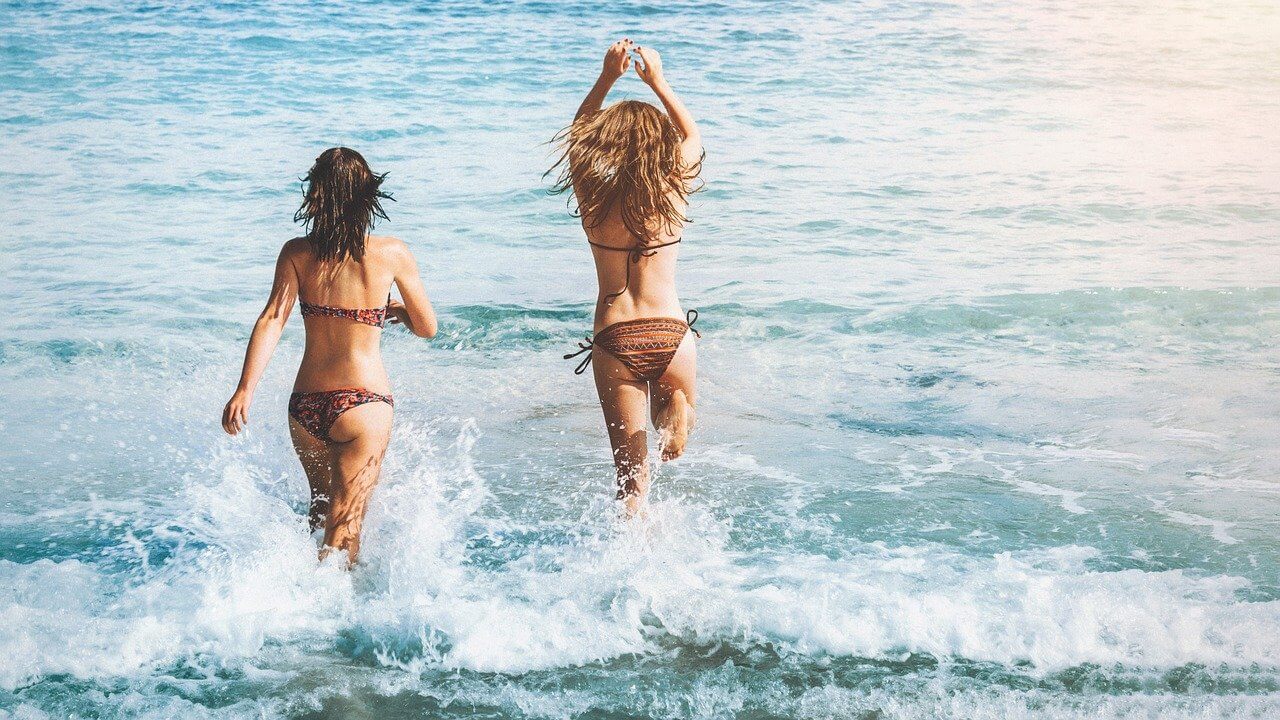
Broadening your circle of friendship? Then a Croatian beach wins
With the Croatian hotel scene being more and more frequently branded to attract certain clientele, those who are interested in meeting new people on holiday, can expect that other guests in the hotel are similar to them in terms of interest and lifestyle. That's great, but keep in mind that other guests may just be interested in chilling, eating, and sleeping in the hotel, and not really socialising. On the other hand, the world of the Croatian beach is much more dynamic and with long history of interesting real and fictional stories (in books and movies) about awesome friendships and passionate relationships which started with an exchanged glance at the beach; the beach is the place to meet new people.
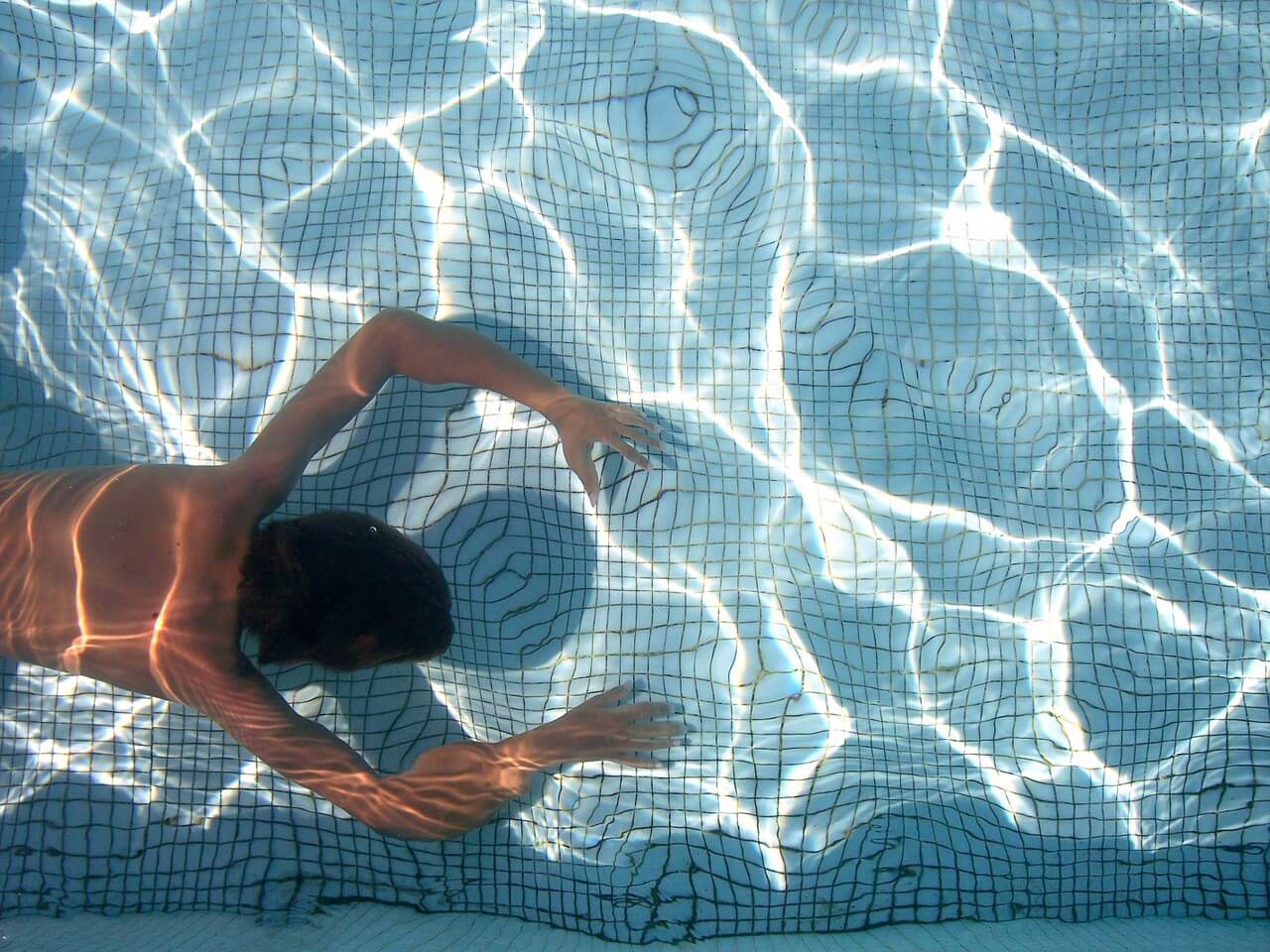
Want to be content with the water? The pool wins
When it comes to the Croatian beach offer, there are many types to choose from. Some beaches don't only offer unhindered access to the beautiful Adriatic as their lure but also much more, such as flotation devices to waterslides, sunbeds, and more. That said, certain pools also have more content than another. But, as a guest of the hotel, you can use everything that has been included in the price of your stay, while beaches (in the majority of cases at least) charge extra for these additional features. 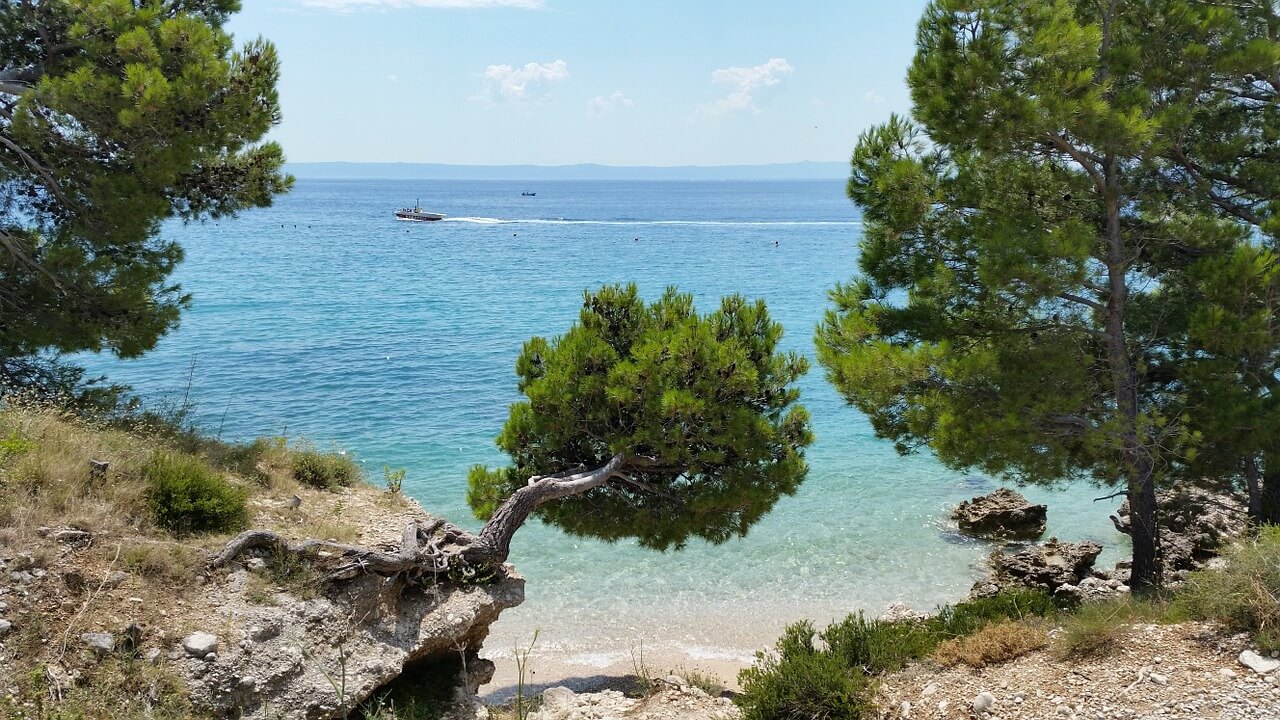
pixabay
Do you want to experience nature at its finest? Then the beach wins
With pools being man-made, they lack the joy of coming across unexpected discoveries which is what the sea offers. From pebbles to seaweed or sand underneath you to fish and other marine life sharing the swim with you, your experience in the Adriatic isn't just an opportunity to relax and freshen up but also to connect closely with nature. When a wave comes, those who are more in the market for excitement will surely have their blood pumping that bit harders as they are carried by the waves. You can also lie on the beach and enjoy the zen the sound of calm waves brings free of charge.
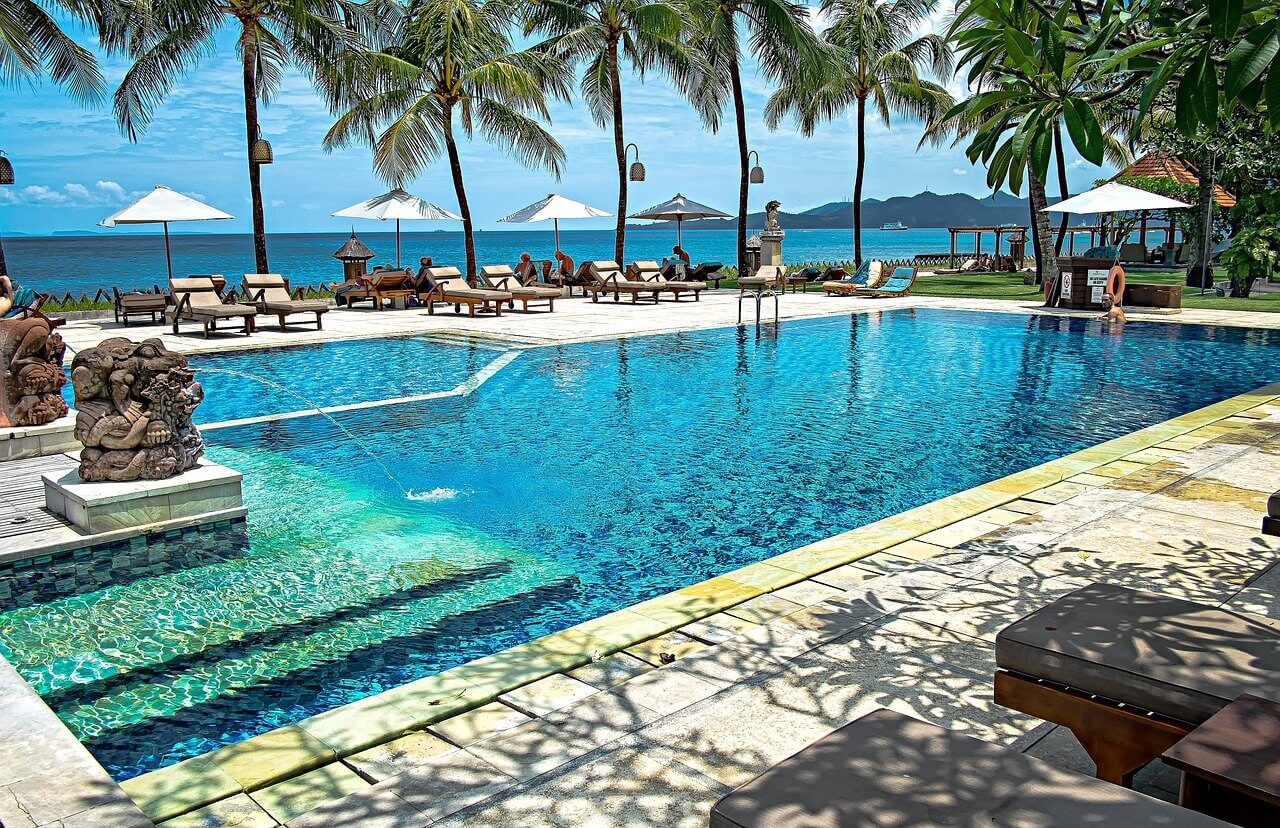
If proximity is what you're after, then the pool wins
When you're searching for a hotel, you probably want the one which is as close as possible to a beautiful Croatian beach. However, if you're a bit of out shape (with no desire to really improve that), and you learn that the promised three-minute walk to the beach lasts up to seven minutes or more at your pace and you just don't feel like walking that much as the heat is draining the life out of you, then the pools are right there inside the hotel complex. The only way to dive in for some aquatic refreshment faster is to take a shower in the hotel room, but really, where is the fun in that?
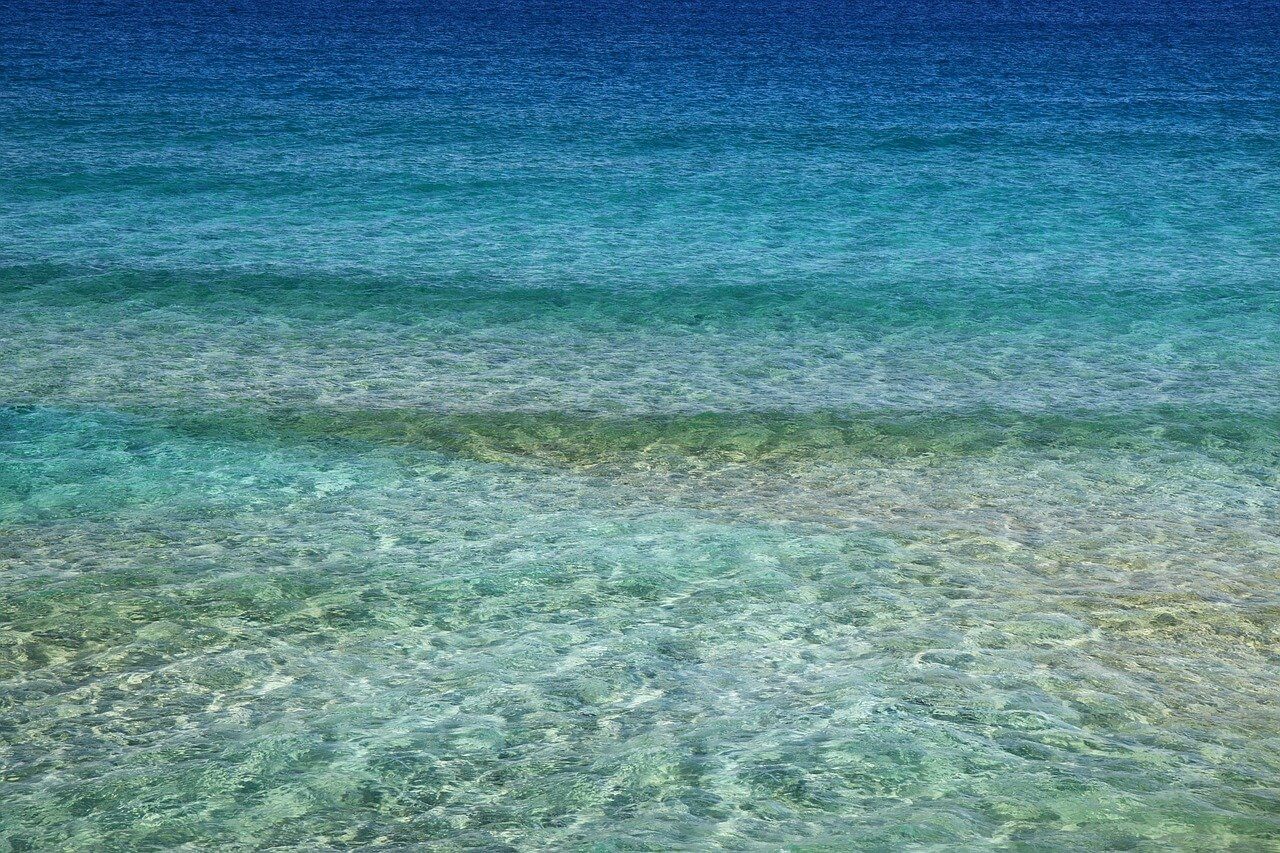
Viva la anarchia! – The beach wins
As mentioned above, pools are safer, not just because of their size and safe terrain, but also because of the rules they have. That said, if you've arrived at your destination listening to the greatest Sex Pistols hits and that little anarchist in you ready to get wild, head over to the beach to learn a whole new meaning of freedom. Swim where you want, jump from wherever you want (at your own risk, of course), and as long as you don't pollute the sea, pose a threat to other people or endanger the native marine life, where your sense of creativity ends is your only limit. Swim any time you want. You don't have to take a shower before diving in, and as many Croats will whisper to you in a clandestine manner when nobody is listening: you're free to pee in the sea if you need to.
The Croatian coast has you covered - the choice is yours
These are some of the arguments to help you decide would you prefer to be by the pool or next to a Croatian beach. Since the Croatian coast can offer both salty and freshwater options for your enjoyable holiday, it's best to try out both.
Learn more about beaches in Croatia on our TC page.
For more about the Croatian Adriatic Sea, follow TCN's dedicated page.
Croatian Souvenirs to Remember Your Perfect Holiday in Croatia
July 6, 2021 - Ashleigh Brilliant once said, "Keep some souvenirs of your past or how will you ever prove it wasn't all a dream?" Here are some authentic Croatian souvenir ideas to keep your dreamy holiday memories in Croatia alive.
Traditional handmade lace
 By foto Suradnik13 - Own work, CC BY-SA 4.0, https://commons.wikimedia.org/w/index.php?curid=4674646
By foto Suradnik13 - Own work, CC BY-SA 4.0, https://commons.wikimedia.org/w/index.php?curid=4674646
Lacemaking in Croatia is a traditional craft that began in the Renaissance era and is listed under UNESCO's Intangible Cultural Heritage of Humanity. The Croatian laces are notable among others due to their unique materials, patterns, and designs. There are several lacemaking traditions in Croatian but the top ones are needle lacemaking in Pag, bobbin lacemaking in Lepoglava, and agave lacemaking in the island of Hvar. Pag needle lace is made by needlepoint, patterned with various geometrical motifs most especially, the spider web. Lepoglava bobbin lace uses flax or cotton thread and is a combination of stylized geometric, floral, and animal patterns. The most unique is the agave lacemaking that is done by the Benedictine nuns in the town of Hvar. Making this lace requires a lot of effort and time - it starts from collecting the thread from the agave plants that grow on the island, to extracting the threads from the leaf, and finally, processing and trimming the threads for lacemaking.
Cravat
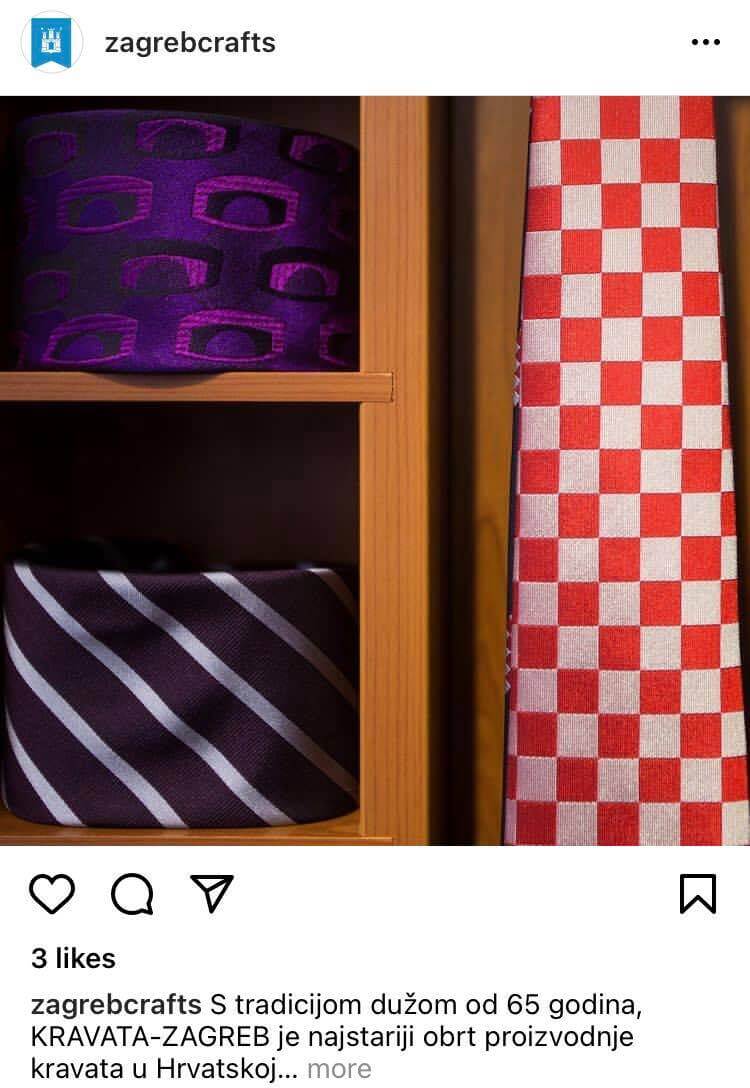 Photo source: Instagram: zagrebcrafts
Photo source: Instagram: zagrebcrafts
Did you know that the cravat, or simply known as the necktie, originated in Croatia? It has a long history all the way back to the 17th century when Croatian mercenaries hired by King Louis XIII wore their traditional knotted neckerchiefs which the Parisians became fond of, most notably King Louis. He even ordered these ties to be a mandatory accessory for royal gatherings. The fashion craze started for neckties started in Europe around 1646 when the young King Louis XIV began incorporating cravat in his royal garments. Since the French word for Croats is 'Croates' and the Croatian word is 'Hrvati, the necktie was named "La Cravate". Is there any necktie more fitting to wear on October 18, The International Necktie Day, than the original Croatian Cravat?
Konavle Embroidery
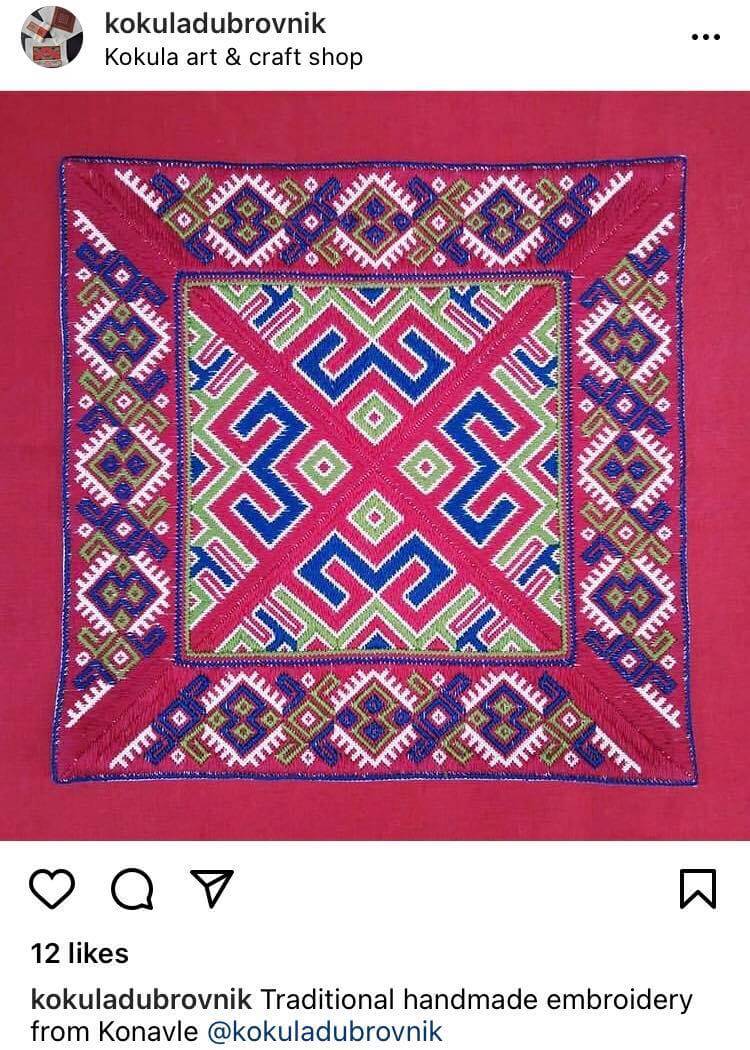
Photo source: Instagram: kokuladubrovnik
A basic decorative element in the women's national costume, the Konavle embroidery has been a tradition by women in Konavle, Dubrovnik since the 15th century. Originally embroidered in silk thread for women's traditional dresses, the rigorously symmetrical and specific Konavle patterns come in black, red, dark green, dark blue with yellow-gold trimmings and is now embroidered on other things like tablecloths, pillows, and pads. Customarily, the cultivation of silkworms for silk thread production was done by young maidens in this town each year during spring, until they cultivate enough silkworms to produce their own thread for embroidery. This artwork can be found in Dubrovnik's old town and around the Dubrovnik area.
Maraschino Liqueur
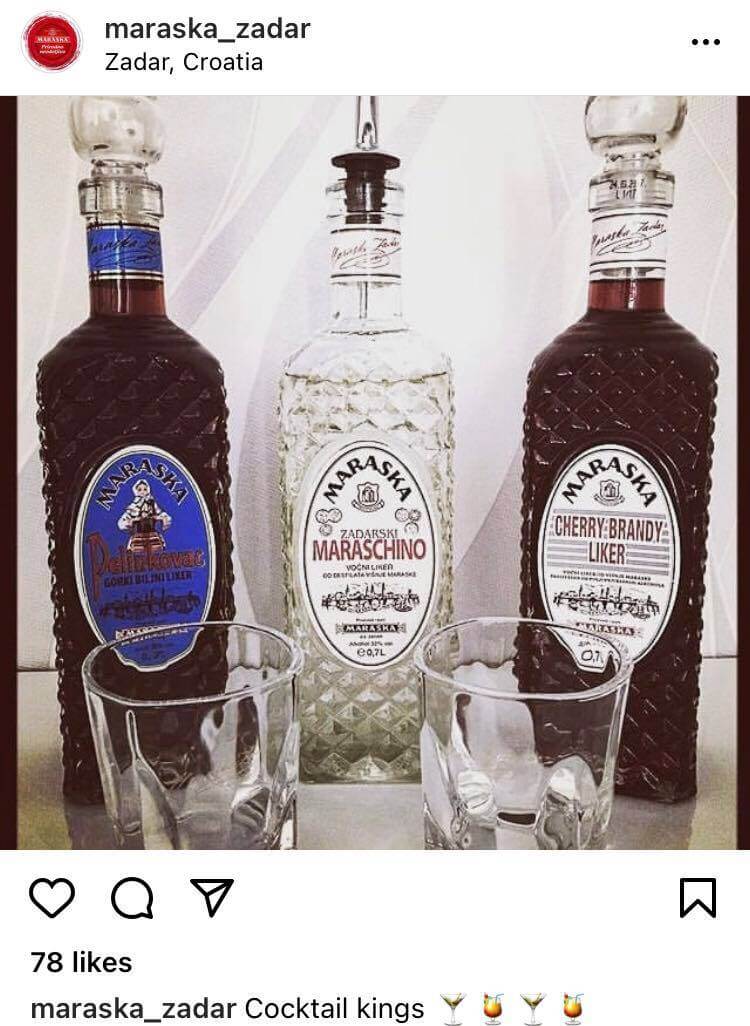
Photo credit: Instagram: maraska_zadar
Originating from Asia Minor, the maraschino cherries were brought to the Mediterranean during the time of the Roman Empire. The bitter-sweet Maraschino flavour is extracted from Marasca ripe sour cherries and their young leaves and is used for distillation. The Maraschino liqueur was even served on the tables of historical rulers such as Napoleon Bonaparte, George IV of the United Kingdom, and Emperor Nicholas of Russia. Many notable celebrities enjoyed the taste of Maraschinos including Alfred Hitchcock, G. B. Shaw, Ernest Hemingway, and Charlie Chaplin. It was also included in the list of stocks of the Titanic on its historically famous first and last voyage. Called "the king of all liqueurs", Maraschino liqueur makes a perfect souvenir. It can be found in almost any supermarket in Croatia, but for a nice gift-packaging, you can visit or buy online at the Maraska Store in Zadar.
Šibenik button
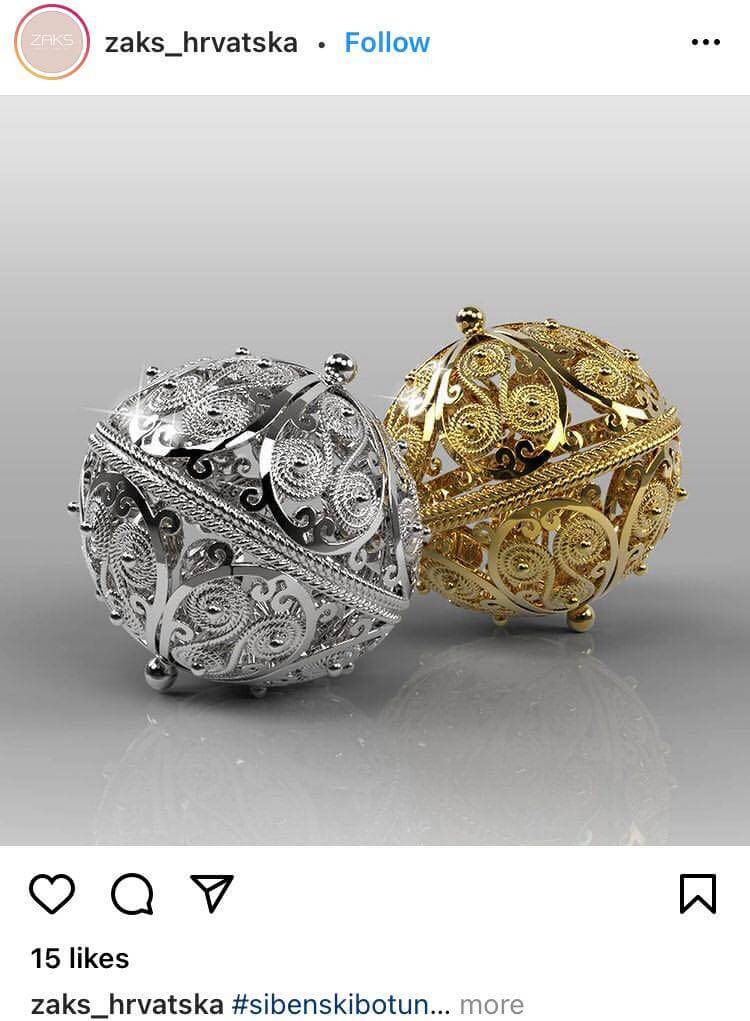 Photo source: Instagram: zaks_hrvatska
Photo source: Instagram: zaks_hrvatska
The Šibenski botun, as they call it in Croatia, was recognized by the Croatian National Tourist Board as the most original Croatian souvenir in 2007. Historically worn only by Croatian men, the buttons used to indicate the social status of the wearer and also had military implications because they were customarily given as gifts to commanders and heroes. The making of these buttons use the ancient filigree technique and used silver. Nowadays, the Šibenik buttons are now sold in gold and aluminum and come in different sizes and forms such as earrings, rings, necklaces, brooches, and bracelets in many Croatian jewelry shops. There is also other traditional Croatian jewelry you can buy all over Croatia - Zaks has an impressive list of authentic Croatian jewelry products for you to choose from!
Licitar Hearts
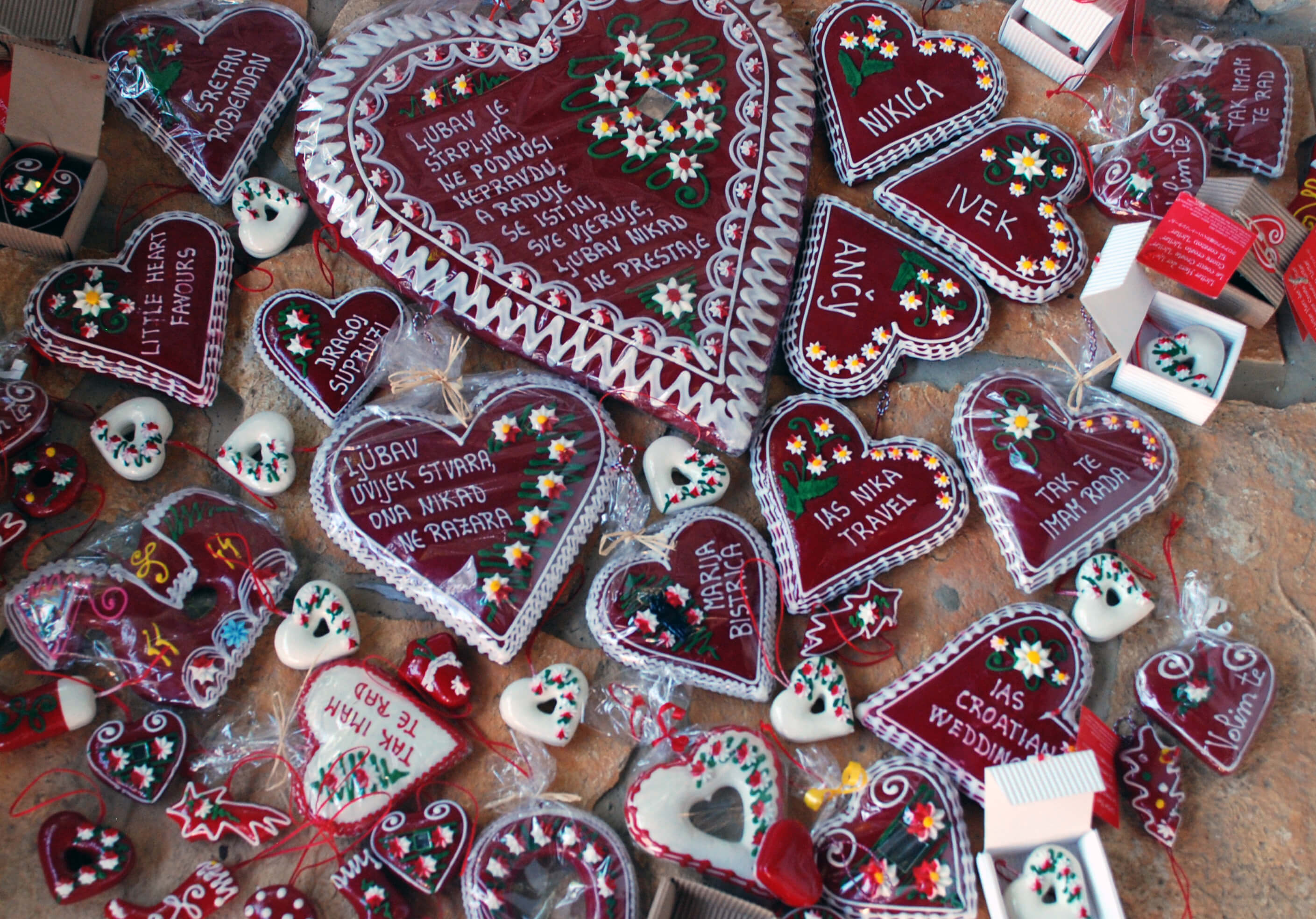 By Seanpu1 - Own work, CC BY-SA 3.0, https://commons.wikimedia.org/w/index.php?curid=11152088
By Seanpu1 - Own work, CC BY-SA 3.0, https://commons.wikimedia.org/w/index.php?curid=11152088
The most recognizable symbol of Zagreb, Croatia's capital city, is the Licitar Heart. This tradition dates back to the Middle Ages, all over Europe but usually in monasteries. They were famous souvenirs for pilgrims who buy them to remember their long and taxing journey to spirituality. These red hearts are completely edible, even though most people prefer them as decorations. The traditional way of making a Croatian Licitar is listed under UNESCO's Intangible Cultural Heritage because of the intense labour, time, and skills needed to make them - which, if traditionally prepared, can take more than a month at the very least. Nowadays, most people take shortcuts and the mass-produced licitars are rarely traditionally made. Licitar hearts are usually gifted on weddings adorned with the wedding date and the names of the newlywed and as a token of love for sweethearts on Valentine's Day. They also have now become popular Christmas ornaments.
Šestine Umbrella
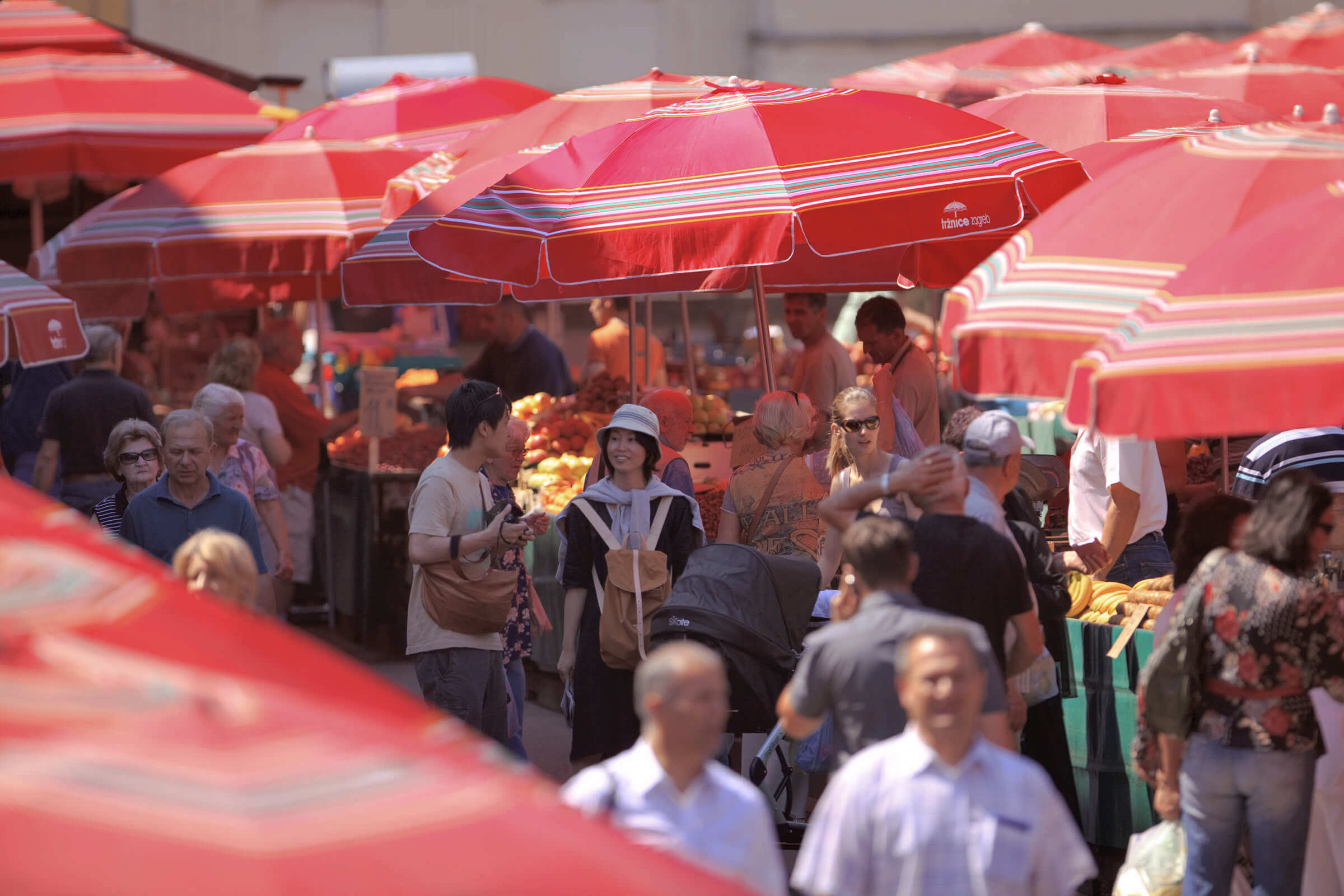 Šestine umbrellas at Dolac market, Zagreb | Photo credit: Mario Romulić
Šestine umbrellas at Dolac market, Zagreb | Photo credit: Mario Romulić
Another souvenir prominent in Zagreb, the umbrella is a part of the folk attire of the Šestine people who live on the slopes of Medvednica mountains in Zagreb. The costume was worn every day by the people in Šestine until the 1960s but nowadays, it is mostly worn at special events, ceremonies, and folklore festivals. The Šestine umbrellas are usually used as parasols at Zagreb's famous Dolac market. The umbrella is characterized by bright red striped canvas, a wooden rod, and a handle made of chestnut wood. This iconic umbrella of Zagreb has been gifted to well-known figures such as Former Prime Minister of the United Kingdom Margaret Thatcher and celebrity Robbie Williams. At present, the most famous manufacturer of authentic šestine handmade umbrellas is Cerovečki Kišobrani.
Lavender products
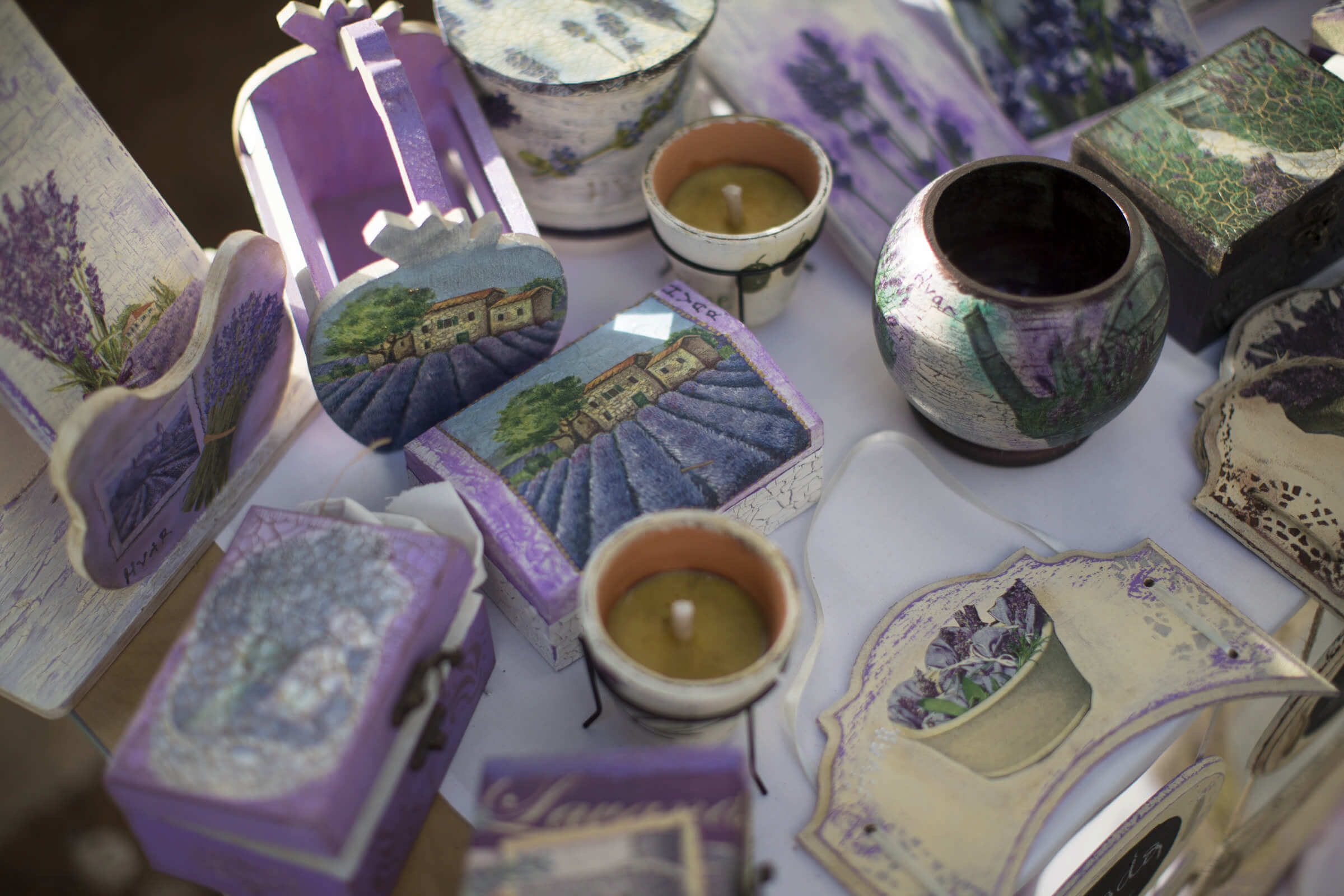 Lavender products from Hvar Island | Photo credit: Mario Romulic
Lavender products from Hvar Island | Photo credit: Mario Romulic
Lavender is a beautiful, purple Mediterranean herb which blooms abundantly in the Dalmatian region of Croatia every summer. Although the main Croatian lavender growing region is the island of Hvar, it can be found almost anywhere in Dalmatia. A lot of souvenir shops sell lavender products such as dried lavender flower pouches which are good for repelling wardrobe moths and mosquitos, a lavender essential oil that is famous for its medicinal benefits such as treating wounds and its calming effect, and lavender soap, cream, and lip balm which are all good for various skin problems such as acne, burns and insect bites. In Dalmatia, lavender is also used in sweets most especially in ice cream - so do not forget to try one out!
Flower of Salt Nin
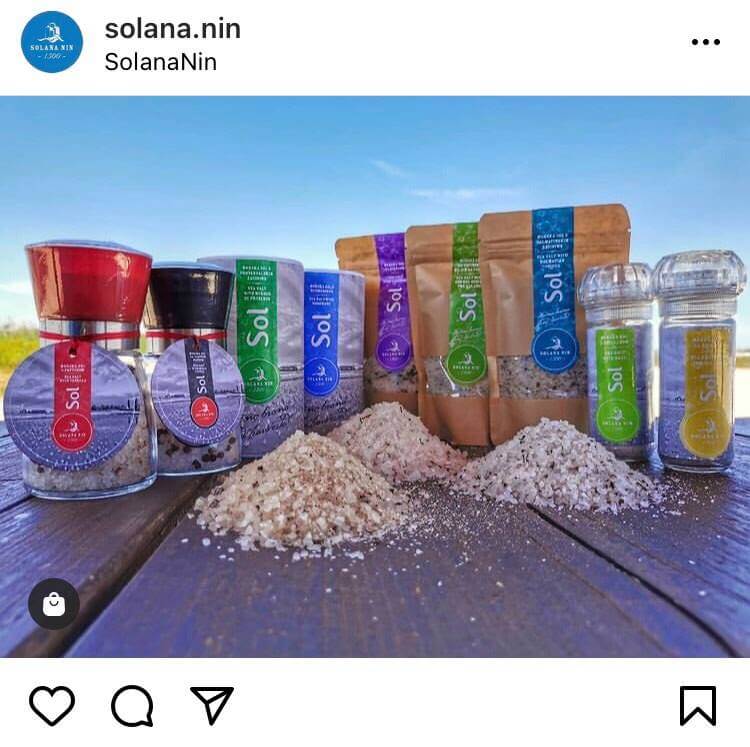
Photo source: Instagram: solana.nin
Ecologically produced and harvested by human hands, the Flower of Salt from Solana Nin is called "the caviar among salt". Nin Saltworks is found in a small town of Nin near Zadar and has been producing salt traditionally and sustainably for 1,500 years. Their product is a result of the perfect amalgamation of the sun, Adriatic sea, and the Bora wind from the Velebit mountain. It is named Flower of Salt because it appears on the surface of the sea like a thin layer of flower petals and is delicately harvested by hands. The salt is often not used in the cooking process but is added at the end as a final touch. Apart from heightening the taste of the dishes, salt enriches the body because it contains 75 minerals essential for human dietary needs. Solana Nin also sells Flower of Salt with other spices such as lavender, Dalmatian spices, truffles, and paprika. They also sell other souvenirs such as ceramic and wooden salt keepers, salt necklaces, even chocolates, and energy bars containing this special ingredient.
Croatian wine and rakija brandy
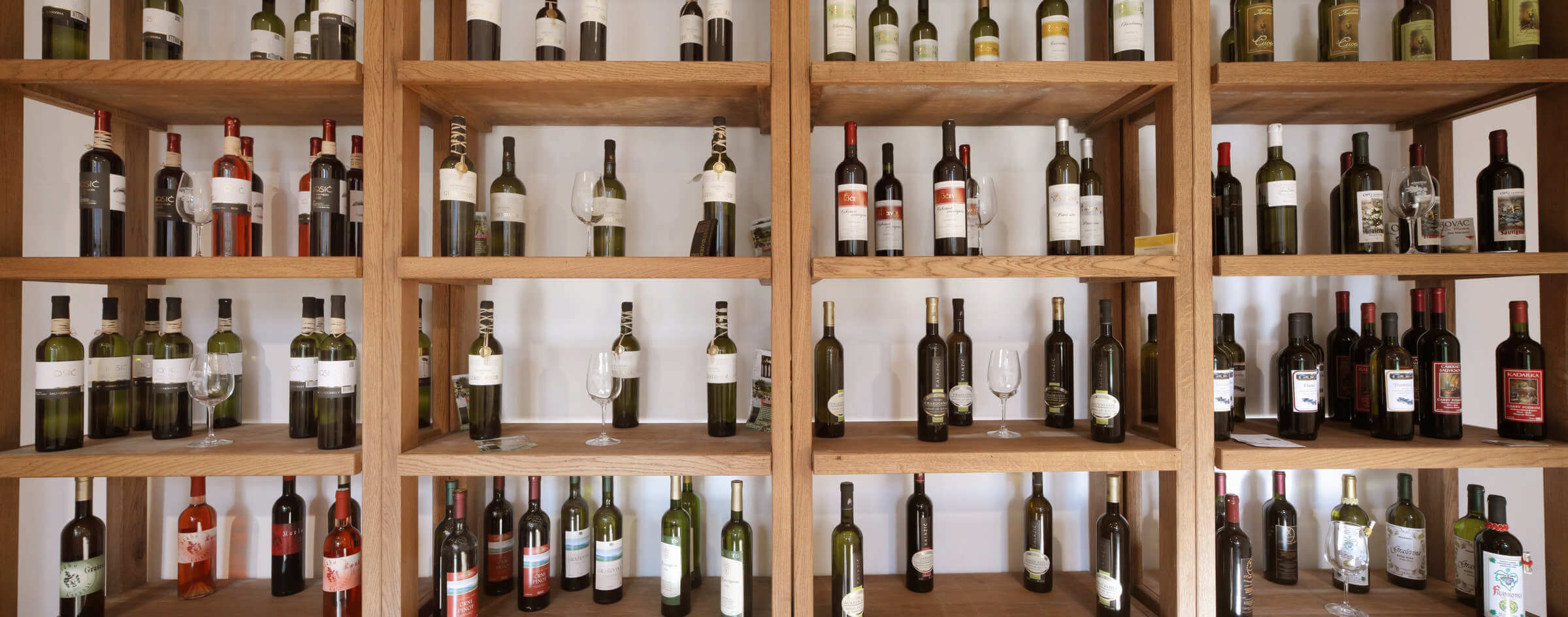 Photo credit: Mario Romulić
Photo credit: Mario Romulić
Croatia has A LOT of indigenous grape varieties so a bottle of Croatian wine makes a great souvenir to remind you of flavours and aromas uniquely found in Croatia. In Dalmatia, the most famous ones are the Vugava wine from Vis island, Pošip Wine, Rosé wines, and the red wine varieties - Plavac Mali, Babić, and Dingac. In Istria, a bottle of Malvasia is highly recommended and Graśevina is your top choice if coming from Slavonia. One of the best ways to buy Croatian wine is to visit a local winery and learn from the makers. Rakija is popular all over the Balkan region, especially in Croatia where locals also use it for cooking, cleaning, and different home remedies. Rakija is a fruit brandy, often made with honey, different herbs, and fruits, and usually served as an aperitif.
Croatian Chocolates
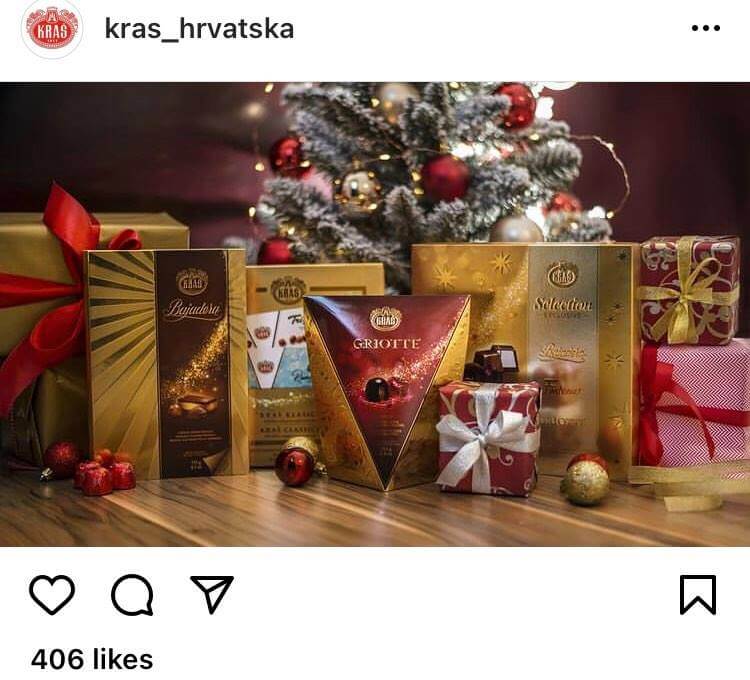
Photo source: Instagram: kras_hrvatska
Kraš is a Croatian chocolate factory that was founded in 1911 and is undoubtedly the best local brand of chocolates in Croatia. Kraš products are widely sold in every supermarket in Croatia. In Zagreb, Rijeka, and Opatija, you can buy Kraś chocolates in Kraš Choco Bar where they sell a wide assortment of chocolate products, chocolate drinks, cakes, ice cream, and pastries. The bestselling product is Bajadera, a layered nougat from almonds and hazelnuts. Kraš also has biscuits and wafers called Domačica, Jadro, and Napolitanke that are also loved by the locals. Other popular products include chocolate boxes Griotte, Fontana, Novela, Dorina Praline and Dragees, and chocolate bars Dorina and Čoksa.
Croatian olive oil
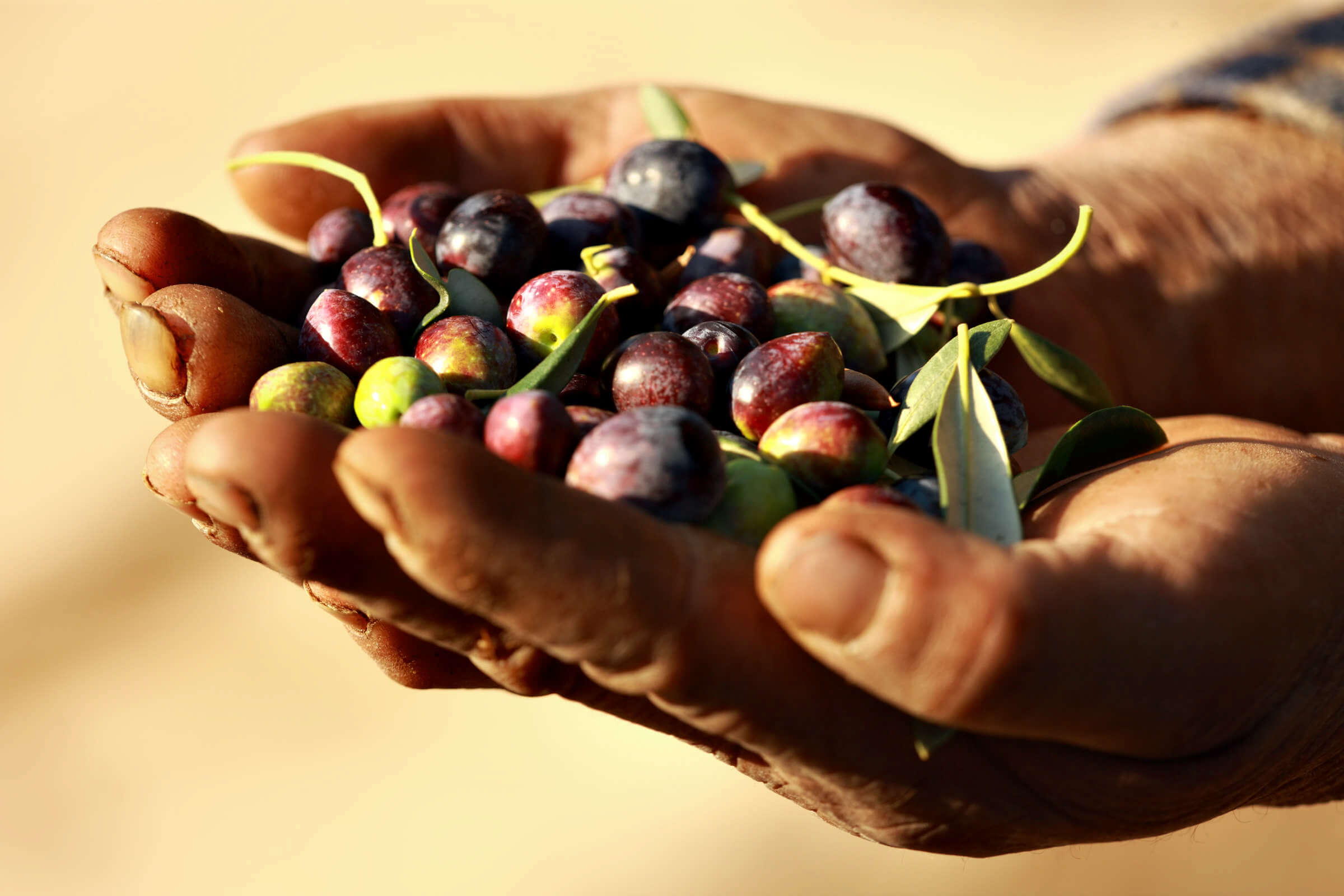 Olives from Pag Island | Photo credit: Mario Romulić
Olives from Pag Island | Photo credit: Mario Romulić
Croatia ranks 7 in the Extra Virgin Olive Oil world ranking for countries with the best olive oil in the world but Croatia produces limited quantities of olive oil for exportation so do not miss the opportunity to bring home a bottle of local Croatian olive oil with you. Olive oil is widely used in Croatian and Meditteranean cuisine and most Croatian families grow olive trees and produce their own olive oil for family use. According to Tasteatlast, the best quality olive oil in Croatia are the ones from the islands of Šolta, Korčula, Cres, Krk, and the region of Istria. There is a lot of homemade olive oil the are sold in pazar (Croatia's farmer's market) and small shops all over Croatia, as well.
Croatian Cheeses
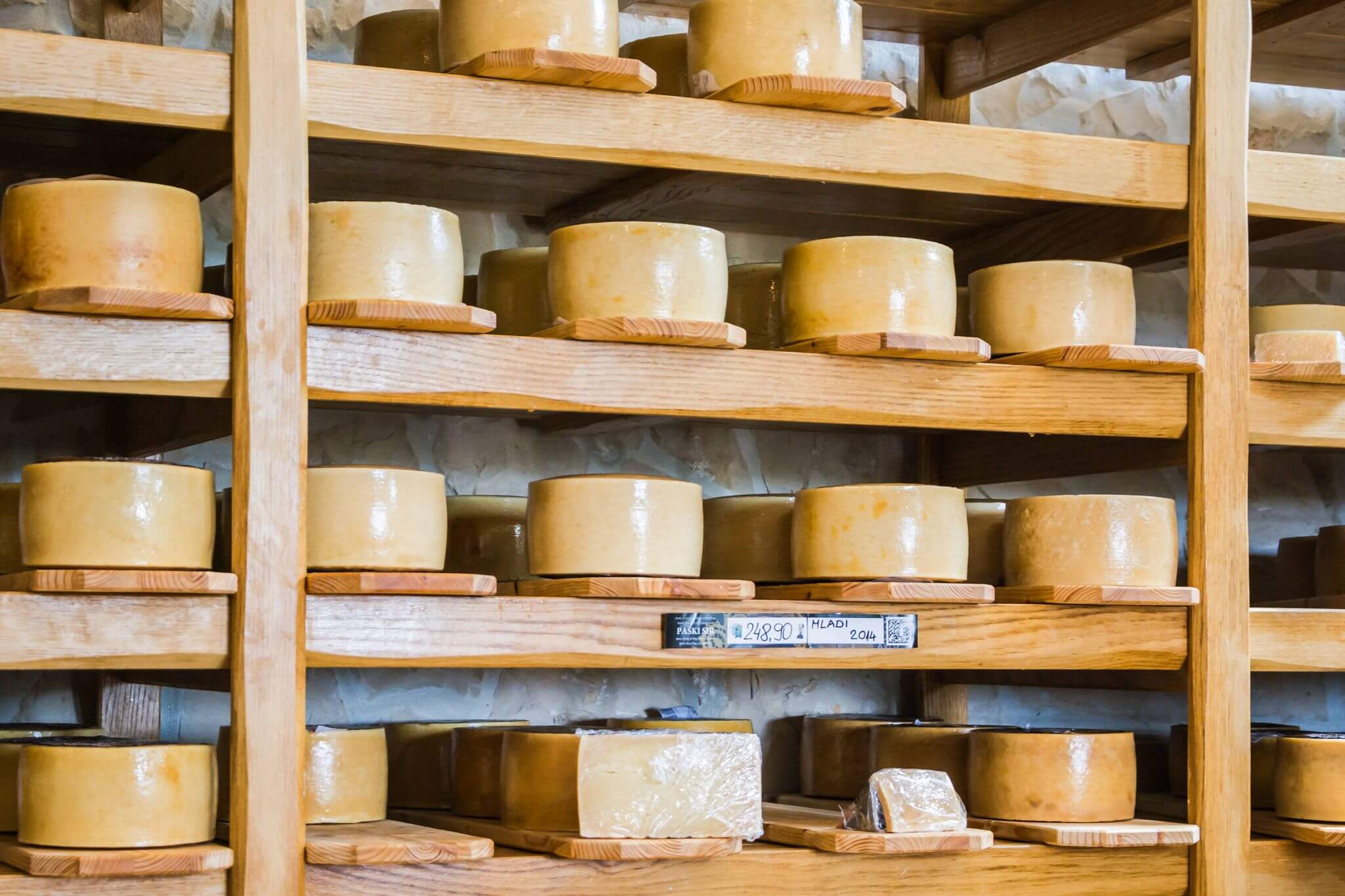 By Isiwal / Wikimedia Commons / CC-BY-SA-3.0, CC BY-SA 3.0, https://commons.wikimedia.org/w/index.php?curid=32899504
By Isiwal / Wikimedia Commons / CC-BY-SA-3.0, CC BY-SA 3.0, https://commons.wikimedia.org/w/index.php?curid=32899504
Croatian cheeses have won several international recognitions and awards making them one of the best souvenirs in Croatia to take home with you. The most famous traditional Croatian cheeses include Pag cheese, inland Croatia's special Prga and Škripavac, and Sir iz mišine from the Dalmatian region of Croatia. The Pag cheese is highly regarded for its unique flavour and good nutritional content since it is made from the milk of sheep that graze solely on Mediterranean herbs and pastures which are full of salt from the sea that was carried on by the Bora wind in the island of Pag. Prgica, or Prga, is a specialty of the Bilogora-Podravina and Medimurje regions and is produced from fresh cow's milk that has been fermented for few days that was added with salt and spicy/sweet red paprika and is dried and shaped into cones. Škripavac is a traditional cheese produced in the region of Lika. Škripavac is the freshest cheese in Croatian cheeses because the raw cow's milk or sheep's milk is only strained and afterward heated enough to dissolve the rennin that coagulates it. Sir iz mišine is made from sheep's milk that is aged in mišina (lambskin sacks), which gives the cheese its distinct aroma and flavour. It is transported and sold in the same sack it aged in.
For more on travel in Croatia, follow TCN's dedicated page.
For more about Croatia, CLICK HERE.
YTD Tourism Results Better than Expected
ZAGREB, Sept 11, 2020 - In the first eight months of this year, 6.8 million tourists visited Croatia and generated 47.5 million overnight stays, which was at 41% and 53% respectively of last year's levels.
YTD tourism results are better than expected following the outbreak of the coronavirus infection, according to a statement made by Tourism and Sports Minister Nikolina Brnjac and the Croatian Tourist Board (HTZ) director Kristijan Stanicic at a news conference in Zagreb on Friday.
Of those 47.5 million overnight stays, the lion's share, 84%, were made in July and August, and in those two months, Croatia registered 5.2 million holidaymakers.
Addressing the news conference, Minister Brnjac thanked the stakeholders and businesses in the tourism sector for those results.
"Clearly, nobody finds this situation easy, however, the sector has shown that it has been well prepared and we thank everyone for these results," she said.
The minister says that the government adopted the right measures in a timely fashion to help keep jobs and liquidity in this industry.
The gradual reopening of the borders paved the way for the arrival of tourists, and the results are better than expected in all types of tourist accommodation, she added.
"Nautical tourism is one of the segments that has fared well, and currently there are about 300 mega-yachts in Croatia. We hope that this good season will continue."
Government assistance schemes for the tourism and hospitality industry will be in effect until the end of this year to help the sector make good preparations for 2021, and the minister recalls that part of the money will be ensured from the European Union's funds.
She announced the preparation of a strategy for sustainable tourism with the engagement of experts in drawing up the document.
About 200,000 tourists currently vacationing
HTZ director Stanicic said that about 200,000 tourists were currently vacationing in Croatia.
He said that HTZ campaigns on social networks had registered hundreds of millions of visits.
Stanicic also commented on some negative campaigns on foreign markets that were unfavorable for Croatia.
We tried to respond to that "with certain positive and fact-based messages," he said.
When asked about the financial effects of the tourist turnover, Stanicic said that one should wait for the end of the year.
The director of the Croatian Association of Tourism (HUT), Veljko Ostojic, said that given the circumstances, the results in the sector were the best possible.
In hotels, overnight stays in the first eight months were at 30.4% of the levels in the corresponding period last year, Ostojic said, warning that the financial effects would be even lower.
Ostojic and the head of the Association of the Croatian Travel Agencies (UHPA), Tomislav Fain, agreed that the assistance provided by the government had been essential to keep the sector in motion.
The head of the association of marinas within the Croatian Chamber of Commerce (HGK), Sean Lisjak, told the news conference that marinas were satisfied with this year's results.
For the latest travel info, bookmark our main travel info article, which is updated daily.
Read the Croatian Travel Update in your language - now available in 24 languages


